Discover the art of perfume making with our step-by-step guide to crafting your signature scent. Learn how to blend essential oils and choose the right base to create a fragrance that's uniquely you.
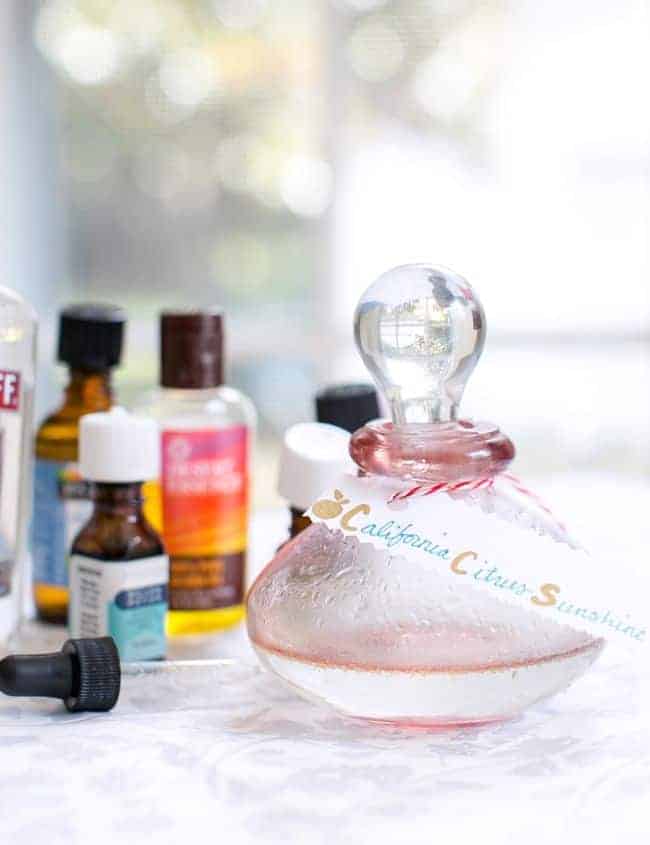
Recently my kiddos have started wanting to make themselves "look pretty." Apparently, this roughly translates to "I must douse myself in copious amounts of perfume." Forced to endure the lingering effects of a White Linen atom bomb in my bedroom, I decided to experiment with making my own.
As it turns out, DIY perfume recipes are not that difficult—and a whole lot less expensive. Plus, you know what ingredients are (or, better yet, aren’t) lurking in your perfume. Here's how to ditch the chemicals and make your own custom fragrance!
Jump to:
- How To Experiment with Making Your Own Fragrance
- Step 1: Choose 1–2 Oils from Each Fragrance Note (Base, Middle, and Top)
- 1. Base Notes (earthy, grounding scents)
- 2. Middle Notes (fruity and floral scents)
- 3. Top Notes (light, citrusy scents)
- Step 2: Combine Oils in 30/50/20 Ratio
- 10 Perfume Blend Ideas
- Step 3: Dilute with Carrier Oil or Alcohol
- Step 4: Let the Perfume Sit for Awhile
- Step 5: Bottle + Wear
- Example Recipe: Sunshine Citrus Perfume
- Ingredients
- Equipment
- Instructions
- FAQ
How To Experiment with Making Your Own Fragrance
There's no right or wrong way to make a fragrance. I prefer to start combining oils in small amounts until I find something I like. Then I simply scale up the ratio based on the amount of perfume I'm making.
But if you're just getting started and don't know what to do first, here's a good place to start:
Step 1: Choose 1–2 Oils from Each Fragrance Note (Base, Middle, and Top)
The best thing about making perfume is that you can customize the scent with any oils you like. If you already have essential oils or fragrance oils lying around, go ahead and experiment, making scents using the ones you have.
These are some of our favorite essential oils for DIY perfume-making:
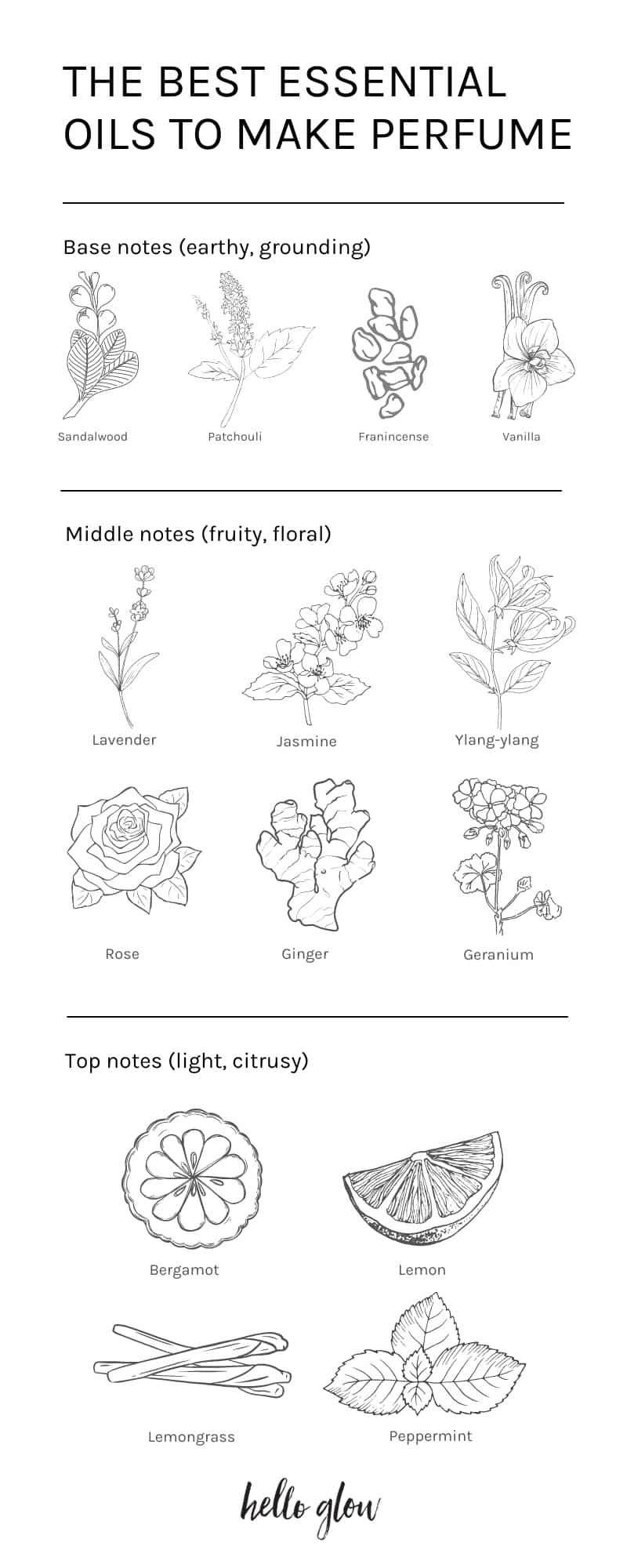
1. Base Notes (earthy, grounding scents)
These scents are the last to develop and stay the longest on the skin. They provide depth and solidity to the perfume.
Sandalwood
- Note Type: Base Note
- Characteristics: Sandalwood oil features a warm, creamy, and woody scent. It's a base note that adds depth, warmth, and longevity to a fragrance, grounding it with its rich and enduring aroma.
Patchouli
- Note Type: Base Note
- Characteristics: Patchouli oil has an earthy, sweet, and musky aroma. As a base note, it provides a strong foundation for perfumes, contributing to their lasting power and depth with its distinctive, grounding scent.
Frankincense
- Note Type: Base Note
- Characteristics: Frankincense oil offers a warm, spicy, and woody aroma. It's used as a base note, adding complexity, warmth, and a mysterious quality to the depth of a fragrance, along with enhancing its longevity.
Vanilla
- Note Type: Base Note
- Characteristics: Vanilla oil has a sweet, warm, comforting aroma with balsamic undertones. It is a popular base note because of its ability to add depth, richness, and longevity to a perfume, grounding the fragrance with its lasting presence.
2. Middle Notes (fruity and floral scents)
Also known as heart notes, these make up the body of the perfume and emerge just before the top notes dissipate. They are usually more mellow and rounded. These will make up the majority of your fragrance.
Lavender
- Note Type: Middle Note
- Characteristics: Lavender oil has a sweet, floral, and herbaceous scent. While sometimes used as a top note due to its freshness, it's more commonly classified as a middle note because of its ability to provide a balanced, soothing presence within the heart of a fragrance.
Jasmine
- Note Type: Middle Note
- Characteristics: Jasmine oil offers a sweet, exotic, and highly floral scent. As a middle note, it adds depth, complexity, and a sensual floral heart to perfumes, making them rich and captivating.
Ylang-Ylang
- Note Type: Middle Note
- Characteristics: Ylang-ylang oil has a rich, floral, and slightly fruity aroma. It serves as a middle note, providing an intense, tropical floral heart that is both seductive and soothing.
Rose
- Note Type: Middle Note
- Characteristics: Rose oil, with its rich, intoxicating floral aroma, is a quintessential middle note. It adds a luxurious, romantic heart to the fragrance, evoking feelings of love and beauty.
Ginger
- Note Type: Middle Note
- Characteristics: Ginger oil has a warm, spicy, and slightly woody scent. It serves as a middle note in perfumes, providing warmth and spiciness to the heart of the fragrance. It helps bridge the top and base notes.
Geranium
- Note Type: Middle Note
- Characteristics: Geranium oil has a floral, slightly fruity, and herbaceous aroma. As a middle note, it contributes to the body of the perfume, offering balance and richness, and it blends well with a variety of other scents.
3. Top Notes (light, citrusy scents)
These are the first scents you perceive in a perfume, giving the first impression but evaporating quickly.
Bergamot
- Note Type: Top Note
- Characteristics: Bergamot oil has a fresh, citrusy, and slightly floral scent. It's used as a top note for its ability to add a bright, uplifting opening to perfumes, with a unique freshness that distinguishes it from other citrus oils.
Lemon
- Note Type: Top Note
- Characteristics: Lemon oil provides a clean, fresh, and zesty scent. As a top note, it offers an immediate burst of energy and freshness, perfect for invigorating and uplifting fragrances.
Lemongrass
- Note Type: Top Note
- Characteristics: Lemongrass oil has a fresh, lemony, and earthy aroma. It is used as a top note because of its strong initial impact and its ability to add brightness and freshness to a blend, although it evaporates quickly.
Peppermint
- Note Type: Top Note
- Characteristics: Peppermint oil offers a cool, refreshing, and minty aroma. As a top note, it provides an immediate burst of freshness, making it ideal for invigorating and energetic scents, but it does not last long.
Step 2: Combine Oils in 30/50/20 Ratio
When crafting your blend, start with the base notes and work your way up to the middle then the top notes. A common starting point is a ratio of 20% base notes, 50% middle notes, and 30% top notes, which for 60 drops of essential oil roughly breaks down like this:
- 12 (total) drops base notes
- 30 drops middle notes
- 18 drops top notes
I use a plastic dropper to measure the essential oil drops into a small 10ml amber bottle to get a sense of the combined scent before moving to the next step. Then I can label the exact blend and easily make more for a new batch of perfume.
Here are some blend ideas using only essential oils, categorized by their roles as top, middle, and base notes to help you craft a well-rounded, long-lasting fragrance.
10 Perfume Blend Ideas
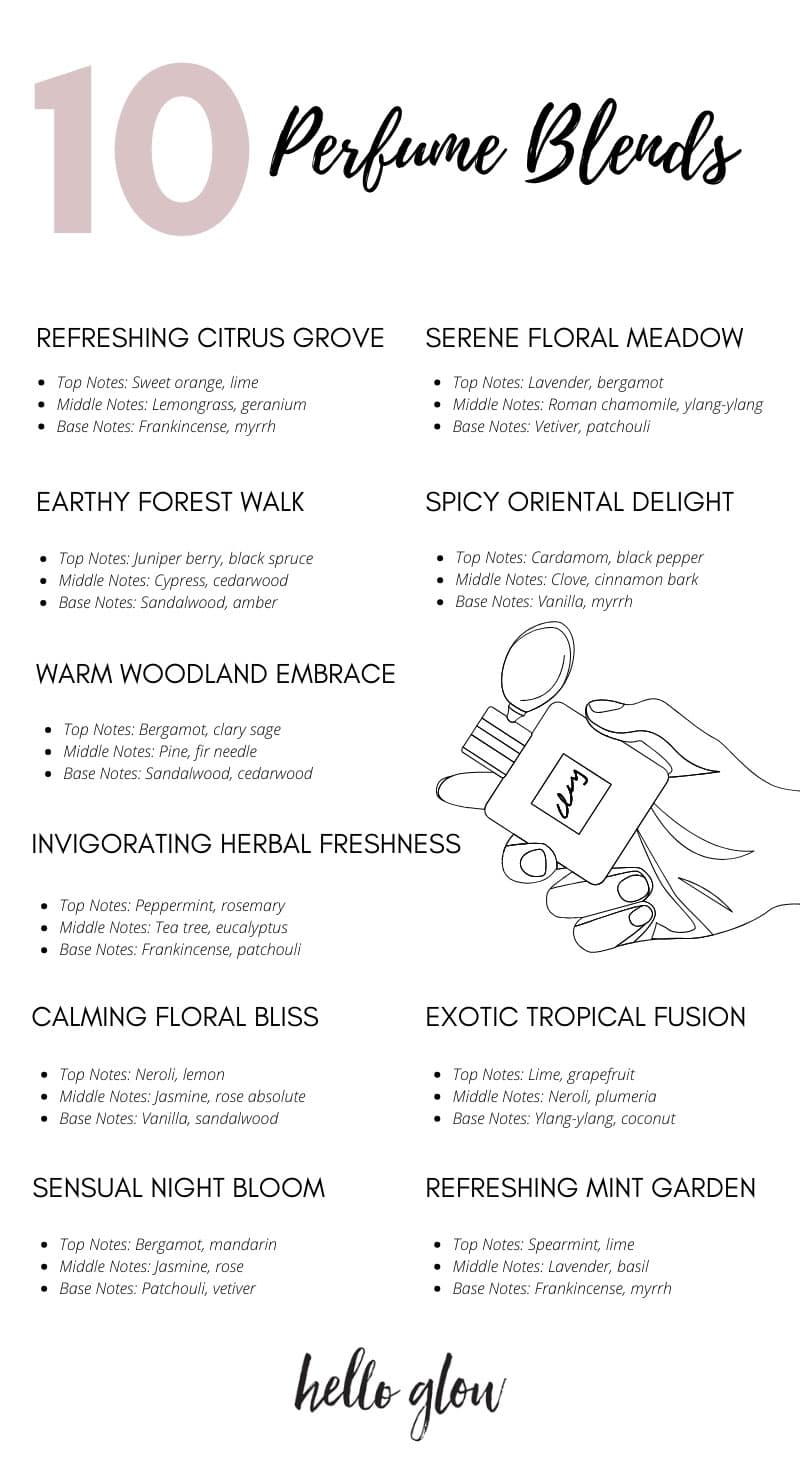
1. Refreshing Citrus Grove
- Top Notes: Sweet orange, lime
- Middle Notes: Lemongrass, geranium
- Base Notes: Frankincense, myrrh
2. Serene Floral Meadow
- Top Notes: Lavender, bergamot
- Middle Notes: Roman chamomile, ylang-ylang
- Base Notes: Vetiver, patchouli
3. Earthy Forest Walk
- Top Notes: Juniper berry, black spruce
- Middle Notes: Cypress, cedarwood
- Base Notes: Sandalwood, amber (a blend of resins like benzoin or labdanum)
4. Spicy Oriental Delight
- Top Notes: Cardamom, black pepper
- Middle Notes: Clove, cinnamon bark
- Base Notes: Vanilla, myrrh
5. Warm Woodland Embrace
- Top Notes: Bergamot, clary sage
- Middle Notes: Pine, fir needle
- Base Notes: Sandalwood, cedarwood
6. Invigorating Herbal Freshness
- Top Notes: Peppermint, rosemary
- Middle Notes: Tea tree, eucalyptus
- Base Notes: Frankincense, patchouli
7. Calming Floral Bliss
- Top Notes: Neroli, lemon
- Middle Notes: Jasmine, rose absolute
- Base Notes: Vanilla, sandalwood
8. Exotic Tropical Fusion
- Top Notes: Lime, grapefruit
- Middle Notes: Neroli, plumeria
- Base Notes: Ylang-ylang, coconut (use a natural, unscented coconut carrier oil for a subtle effect)
9. Sensual Night Bloom
- Top Notes: Bergamot, mandarin
- Middle Notes: Jasmine, rose
- Base Notes: Patchouli, vetiver
10. Refreshing Mint Garden
- Top Notes: Spearmint, lime
- Middle Notes: Lavender, basil
- Base Notes: Frankincense, myrrh
You can use any combination of these essential oils. Feel free to tweak the ratio of essential oils until you get a scent that speaks to you.
Step 3: Dilute with Carrier Oil or Alcohol
Different types of perfume have different concentrations of fragrance. It typically breaks down like this:
- Perfume: 15-30% fragrance
- Eau de parfum: 8-15% fragrance
- Eau de toilette: 4-8% fragrance
- Eau de cologne: 2-5% fragrance
The more diluted the fragrance is the weaker the scent will be. But dilution is essential! Do not apply undiluted essential oils directly to your skin.
- 10% dilution: 60-80 drops of essential oil for each ounce of alcohol or carrier oil.
- 5% dilution: 30-40 drops per ounce of alcohol or carrier oil.
- 2.5% dilution: 15-20 drops per ounce of alcohol or carrier oil.
To dilute in alcohol, use grain alcohol, vodka, or perfumer's alcohol. We broke down the pros and cons of each type here.
To dilute in a carrier oil, stick with an oil that doesn't have a competing scent. Jojoba oil and grapeseed oil are two of my favorites.
Step 4: Let the Perfume Sit for Awhile
Combine the essential oils and alcohol or carrier oil in a dark glass container to store for 48 hours or up to 6 weeks.
Essential oil perfumes can benefit from aging for a few days to a few weeks. This is especially true for essential oils diluted in alcohol. It allows the scents to meld and deepen, creating a more harmonious fragrance.
The longer it sits, the stronger the scent will be. Feel free to add some flower petals or other botanicals to the mixture during the aging process!
Step 5: Bottle + Wear
Decide how you want to use your perfume. Transfer it to a pretty spritzer bottle for daily application (you can even use it as a deodorant!) or add a couple of ounces of distilled water for a refreshing body spray or add hydrosol for a hair perfume.
If you diluted the fragrance in carrier oil, you can use it to make perfume roller balls, solid perfume, or a perfume oil body spray.
Plus, guys can make their own cologne and aftershave too!
Example Recipe: Sunshine Citrus Perfume
Personally, I’m always drawn to the clean scents of citrus and peppermint, so we concocted this homemade perfume that layers orange and grapefruit along with lavender and peppermint. And I’ll be the first to admit that it smells heavenly!
Ingredients
- 2 oz pure grain alcohol, vodka, or perfumer's alcohol
- 1-2 oz distilled water
- Citrus Top Essential Oils: Choose from lemon, orange, bergamot, grapefruit, or lime for the main citrus notes. You can mix and match as you like.
- Base Note Essential Oil: Consider cedarwood, sandalwood, vanilla, or patchouli to ground your perfume.
- Middle Note Essential Oil: Floral or herbal oils like lavender, rose, jasmine, or rosemary can add complexity.
Equipment
- Small glass or ceramic bowl for blending the perfume
- Dark glass container for storing the perfume
- Pretty glass perfume bottle to keep perfume in
- Small funnel (if necessary)
- Measuring spoons or droppers
Note: It is important to use glass, not plastic, when mixing the perfume as the essential oils will eat through the plastic.
Instructions
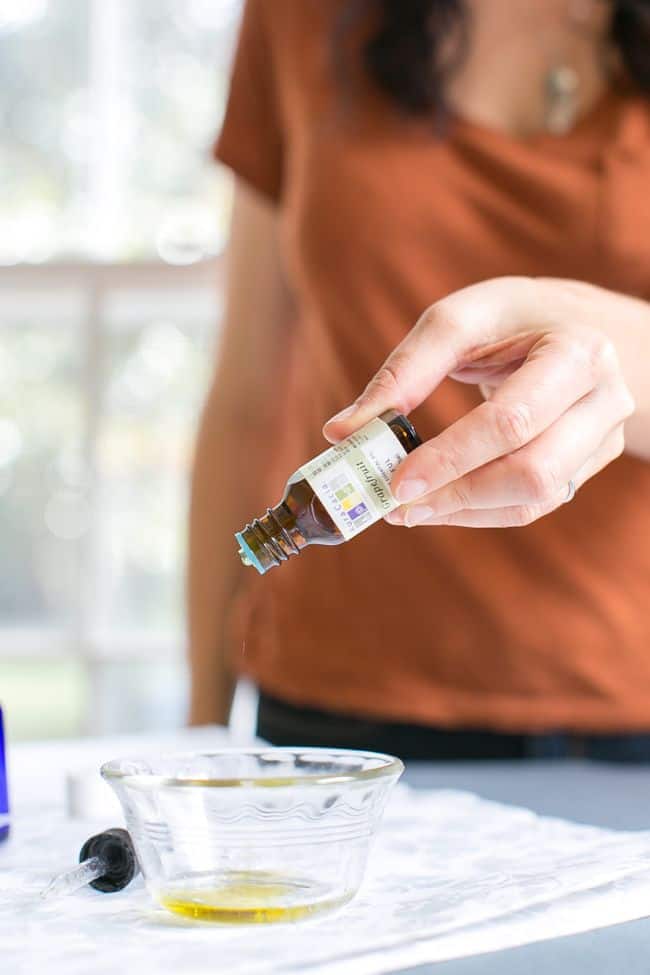
Step 1: Blend the Essential Oils
Start by creating your scent blend. We combined like this:
Base Note: 12 drops frankincense
Middle Note: 10 drops lavender, 20 drops geranium
Top Note: 8 drops sweet orange, 10 drops grapefruit, 4 drops peppermint
After you've found a scent combination that you like, you can scale up the essential oils. Combine them in a small amber bottle to let the fragrances blend. Then take drops from your essential oil blend when you need to make a new batch of perfume.
Step 2: Dilute with Alcohol or Carrier Oil
For alcohol-based perfume: Mix the essential oils with 2 ounces (60ml) of alcohol.
If you want to start with just 1 ounce of alcohol, then scale the recipe down to ~30 drops of essential oil.
For perfume oil: If you're making a roll-on perfume oil, add 12-15 drops of the perfume blend to a 10ml roller ball and fill the rest of the bottle with jojoba oil (or any other unscented carrier oil).
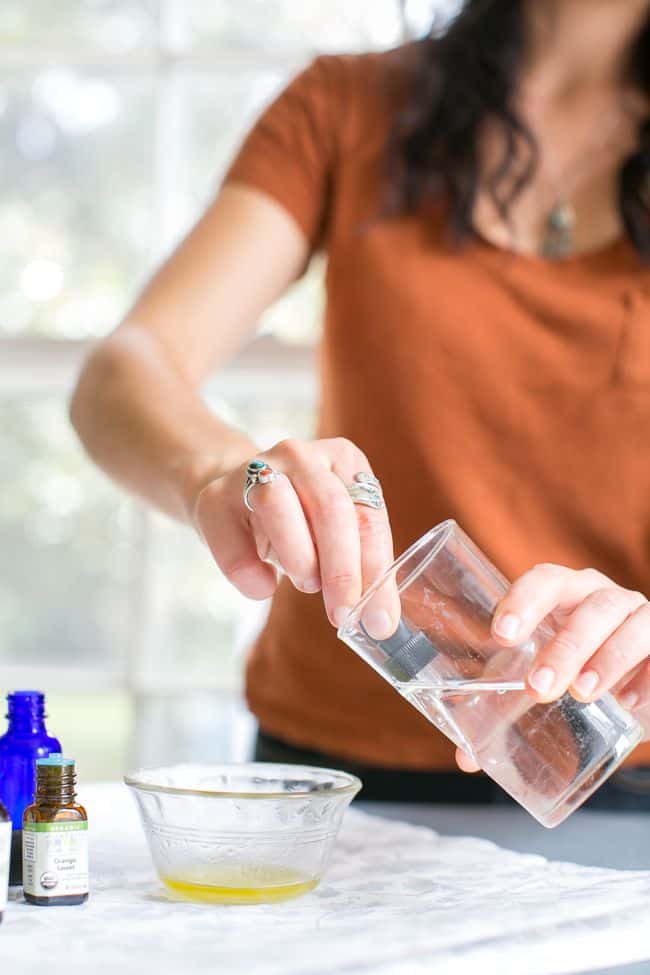
Step 3: Add Water
If you're using distilled water, add it to the alcohol and essential oil mixture. A common ratio is 2 parts alcohol to 1 part water, but you can adjust this based on your preference for scent strength.
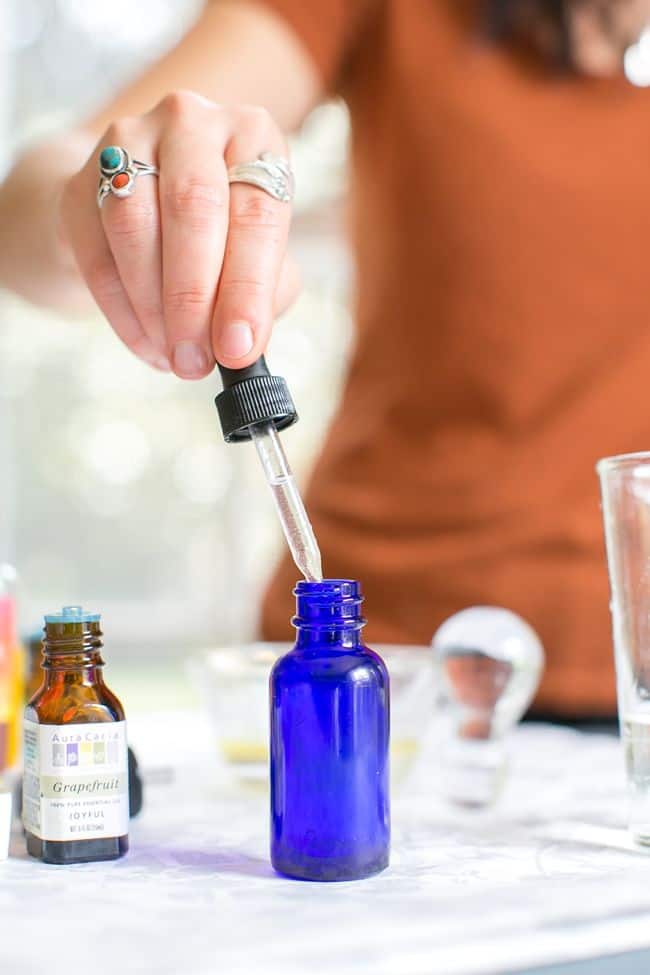
Step 4: Let Perfume Sit
Mix well and transfer to a dark glass container to store for 48 hours or up to 6 weeks.
Essential oil perfumes can benefit from aging for a few days to a few weeks. This allows the scents to meld and deepen, creating a more harmonious fragrance. The longer it sits, the stronger the scent will be.
If you're making a roll-on oil, simply cap it with the rollerball lid. For an essential oil body spray, attach the spray top.

Step 5: Transfer and Apply to Pulse Points
Transfer to a pretty perfume bottle after it has reached the desired scent. Apply to your pulse point to help the scent last longer.
FAQ
The perfume will take on the color of your oils. So if you use a very yellow carrier oil (like jojoba oil), the perfume will have a yellow hue. But if you use lighter-colored oils, your perfume will have a lighter color.
Rubbing alcohol has a pretty strong scent, which is why we recommend vodka or grain alcohol. But if it's all you have, make a small sample and see how you like it—you might find that the oils will mask the smell of the alcohol.
Water helps soften the scent of the alcohol, but it can also cause your perfume to separate. Just shake your perfume before each use to blend everything together. If the separation bothers you, leave out the water altogether and add a bit more alcohol.
Essential oils are lighter (and more natural!) than chemical-laden perfume oils, but they're also not as long-lasting as chemical fragrances, so you might need to apply your perfume more often to maintain the scent.
Have you ever tried making your own perfume? What's your favorite scent? If you love citrus as I do, check out this how to make a hydrosol perfume tutorial that incorporates grapefruit and rosemary.
Not ready to DIY? Try one of these phthalate-free perfumes that we love.
Citrus Essential Oil Perfume
Equipment
- Small glass container for blending the perfume
- Dark glass container for storing the perfume
- Pretty glass perfume bottle to keep perfume in
Materials
- 2 oz pure grain alcohol or vodka
- 12 drops frankincense essential oil
- 10 drops lavender essential oil
- 20 drop geranium essential oil
- 10 drops grapefruit essential oil
- 8 drops sweet orange essential oil
- 4 drops peppermint essential oil
- 1 tablespoon distilled water
Instructions
- Add the essential oils to a glass container.
- When you're happy with the scent, add the alcohol.
- Add distilled water with a dropper.
- Mix well and transfer to a dark glass container to store for 48 hours or up to 6 weeks. The longer it sits, the stronger the scent will be.
- Transfer to a pretty perfume bottle after it has reached the desired scent.
This article was medically reviewed by Dr. Gina Jansheski, a licensed, board-certified physician who has been practicing for more than 20 years. Learn more about Hello Glow's medical reviewers here. As always, this is not personal medical advice and we recommend that you talk with your doctor.
418

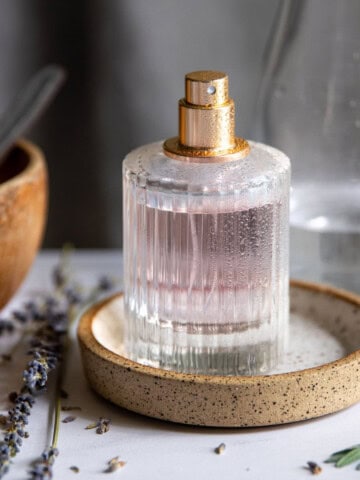
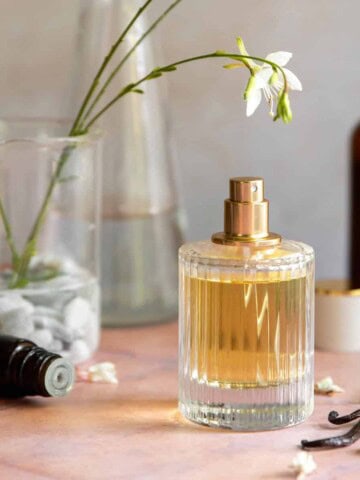
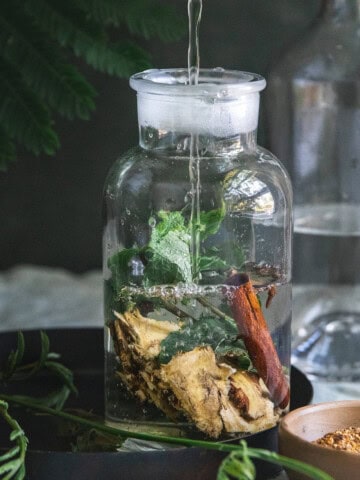
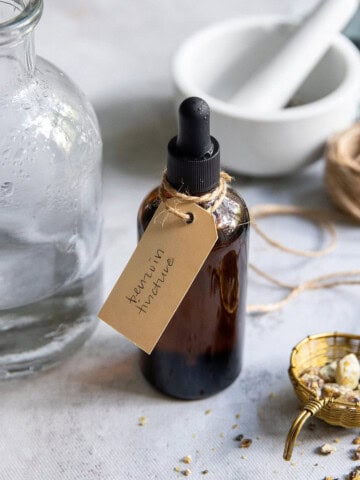
Kristin Photography says
This is really informative article . Thanks for sharing with us this kind of blog.
Madison Banks says
I love all of these scents except lavender (which i am allergic to) is using just chamomile fine or should i replace it with something else all together?
Stephanie Gerber says
Feel free to experiment - you can use whatever oils smell good to you!
CARMEN says
WHAT BOOKS DO YOU RECOMMEND TO START MAKING YOUR OWN PERFUME WITH ESSENTIAL OILS. LOVE TO EXPERIMENT AND BE CREATIVE.
lskshmi says
i want perfume paper with fruit extraction can any one tell process of it
lskshmi says
iwant perfume a paper witf fruit fragrance pllease tell me how can i do this
barbara says
where are the replied to these comments
Pancho Lipschitz says
apparently can't reply to comments. Hmmmm
Cali Ann says
Will the finished product be yellow or should it be clear? Is it possible to find out where your perfume bottle is from? Thank you.
Kimber says
Hi there,
I'm a bit confused...I followed your recipe precisely and ended up with a very yellow concoction that doesn't resemble your picture. Also the oil, vodka and water refuse to incorporate into each other.
Am I missing something?
Thanks,
Kimber
Judy Toth says
Mine too, did you get an answer yet?
Jim from DeoMen says
Will the essential oils be enough to create a lasting fragrance? Don't they sell perfume extracts that you can use?
Abigail says
Hi and thanks for the recipe! can I use rubbing alcohol ?
Steffani White says
I wouldn't because it smells. Vodka has no odor. :)
Sharon says
What if u don't care for citrus or floral.
How can I come up with other fragrances
Trisha's hidden treasures says
Here can I fine all of these items... Walmart?
Nard says
I order most of mine from eBay. Also try perfumer's apprentice website as they have great smelling oils and has info on top/middle/bottom notes(which is which basically)
Rhoda Edwards says
A must try! Seems like I am going to have a busy weekend. Thank you so much.
Stacia says
Good to know about the essential oils! This looks like it would smell amazing!
Angie@Angie's Recipes says
wow Is there anything that you can't??? You are an amazing woman!